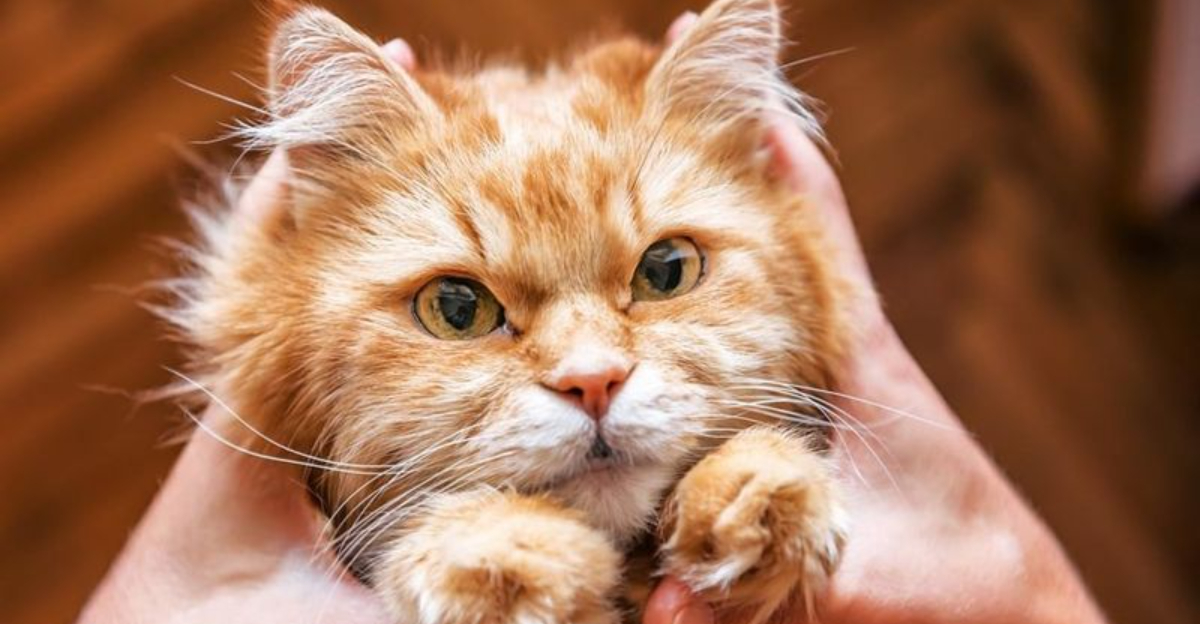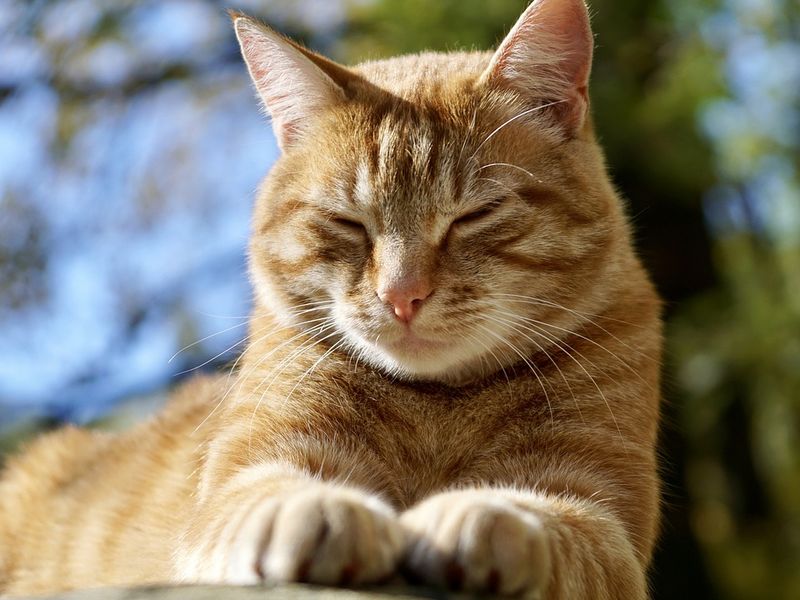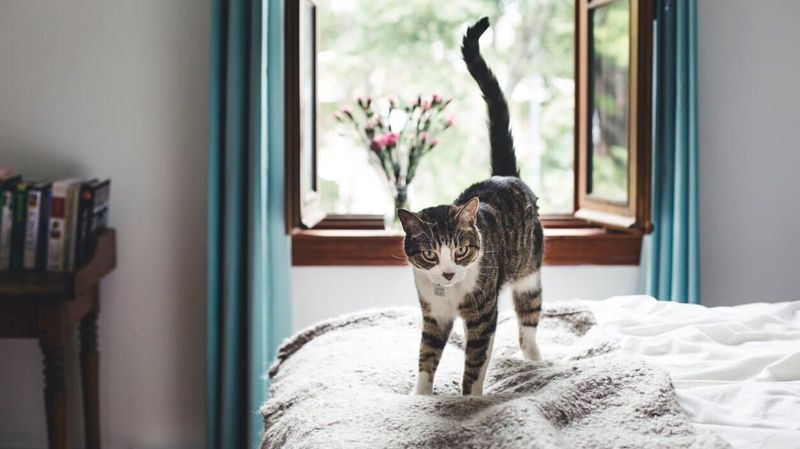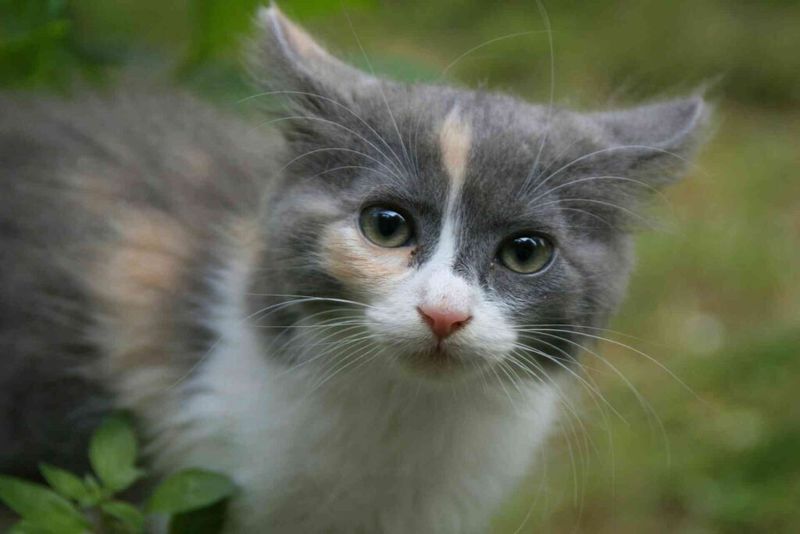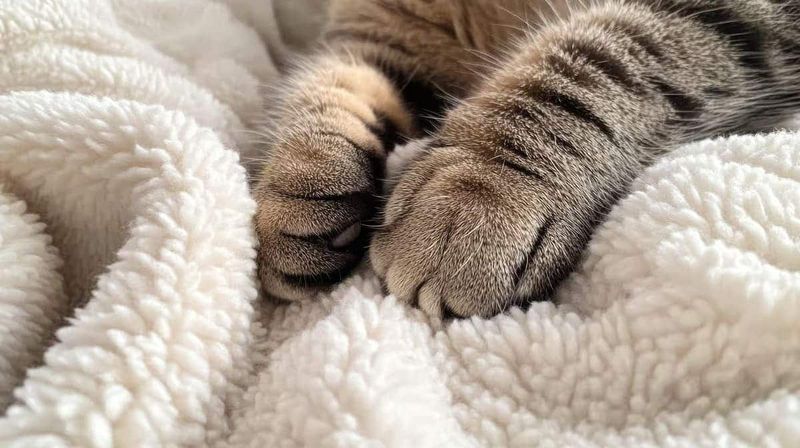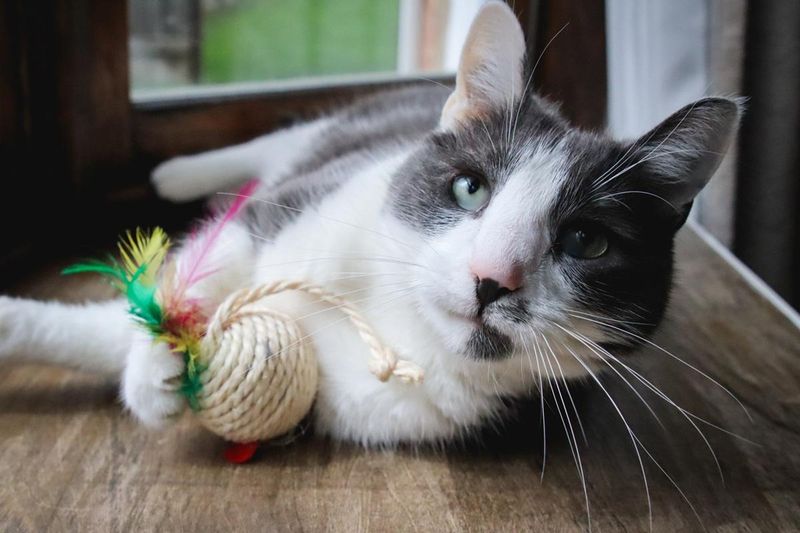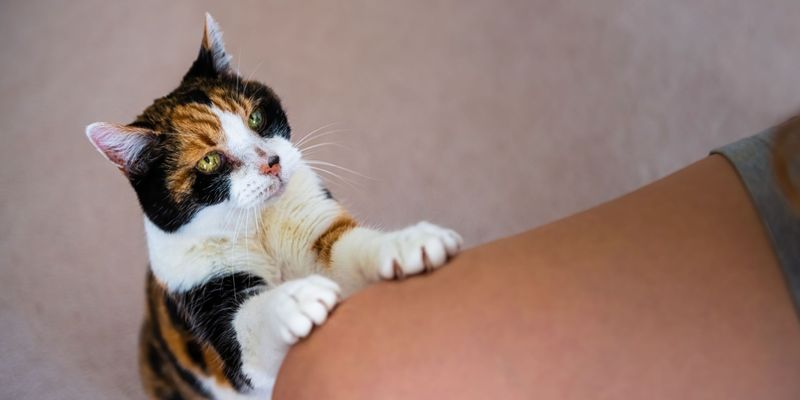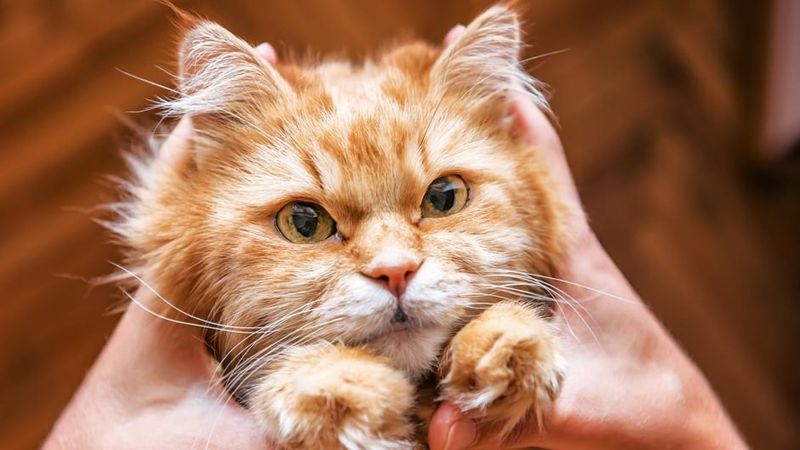📖 Table of Content:
Cats express their emotions through a complex mix of body language, sounds, and behavior. Some signals are easy to spot, like a contented purr or an angry hiss. But many emotional cues are far more subtle and easily overlooked.
A slight flick of the tail, a slow blink, or a sudden change in posture can carry deep meaning. These small gestures often go unnoticed, yet they reveal what a cat is truly feeling in the moment. Learning to recognize them can provide valuable insight into a cat’s inner world.
Recognizing these emotional signals helps build trust and mutual understanding. When a cat feels seen and understood, it often responds with greater affection and confidence. Strengthening this silent connection can turn everyday interactions into meaningful moments.
1. Slow Blinks of Trust
Your cat’s half-closed eyes aren’t signs of boredom—they’re actually love letters! When cats slowly blink at you, they’re expressing deep trust and affection. This gesture, often called a ‘cat kiss,’ indicates they feel safe enough around you to be vulnerable.
Many owners miss this important signal because it’s so understated compared to a dog’s enthusiastic tail wagging. Try returning the slow blink when your cat does this. You’ll be speaking their language and strengthening your bond. Cats reserve these special blinks for their favorite humans, so consider yourself honored when you receive one!
2. Tail Tip Twitches of Excitement
The very tip of your cat’s tail quivering slightly? That’s contained excitement! Unlike full tail swishing (which signals irritation), this subtle movement happens when your cat spots something fascinating but is trying to remain composed. Cat owners often confuse this with agitation because both involve tail movement. The difference lies in which part moves and how fast.
A tip twitch usually means your cat has noticed something interesting—like a bird outside or a toy just out of reach. Next time you see that tiny tail tip trembling, watch where your cat is looking to discover what’s caught their attention!
3. Ear Position Anxiety
Sideways-pointing ears reveal a cat caught between curiosity and concern. This subtle position—not fully forward (interested) or flat back (frightened)—signals mild anxiety or uncertainty about a situation. Cats use this ear position when they’re processing new information and deciding whether something is a threat.
It’s easy to overlook because it’s not as dramatic as flattened ears during fear. This early warning sign is important when introducing your cat to new people or pets. Giving them space during these moments prevents stress from escalating into fear or aggression. Their ears are emotional barometers worth watching!
4. Kneading Without Purring
Silent kneading—when your cat pushes their paws against soft surfaces without making noise—often signals comfort tinged with mild anxiety. This behavior stems from kittenhood nursing but continues into adulthood as a self-soothing mechanism.
While purring during kneading typically indicates pure contentment, the silent version suggests your cat is trying to calm themselves. They might be slightly overwhelmed or processing change in their environment. Cats frequently do this on blankets, pillows, or your lap when seeking reassurance. Offering gentle pets during these moments helps reinforce their sense of security and shows you understand their need for comfort.
5. The Gifting Meow
That distinctive chirping sound your cat makes when bringing you a toy (or sometimes a real hunting trophy) carries special meaning. This unique vocalization differs from regular meows and indicates pride mixed with a desire for approval.
Cats use this special sound only when presenting something they consider valuable. It’s their way of saying, “Look what I accomplished for our family!” Many owners miss the emotional significance of this sound, focusing instead on the gift itself. Acknowledging their hunting prowess with praise reinforces your bond, even if you’re secretly horrified by the half-dead mouse they’ve proudly delivered to your bedroom!
6. Whisker Position Discomfort
Forward-pointing whiskers reveal curiosity, while whiskers pulled back against the face signal discomfort that many owners completely miss. This subtle change happens when cats feel stressed about something in their environment. Whisker position changes can occur during seemingly positive interactions like petting.
If your cat’s whiskers suddenly flatten while being stroked, they might be experiencing overstimulation or “petting aggression” building up. Learning to spot this early warning sign helps prevent scratches and bites. Give your cat a break when their whiskers pull back—they’re politely telling you they need space before they resort to more obvious communication like swatting.
7. Single Paw Stretch of Affection
A cat extending just one paw toward you—especially while maintaining eye contact—is showing affection and seeking connection. This gesture differs from regular stretching and often happens when cats are comfortable but want more interaction. The single-paw reach serves as a gentle request for attention without the neediness of meowing or jumping on you.
It’s a remarkably polite way of saying, “I’d like some love now, please.” Cats typically offer this gesture to people they feel safe with. Responding with gentle pet rewards their trust and reinforces positive communication between you. This subtle reaching out is their version of holding hands!
8. Hiding Their Pain
Subtle changes in grooming habits often indicate physical discomfort that cats instinctively try to conceal. A cat that suddenly stops cleaning certain areas or excessively grooms one spot may be experiencing pain they’re trying to hide. Cats evolved to mask weakness as a survival mechanism, making illness detection challenging for even the most attentive owners.
Other quiet signs include slight posture changes, minor shifts in routine, or barely noticeable hesitation before jumping. Regular observation of your cat’s normal behaviors creates a baseline that helps you spot these tiny changes. Catching these subtle indicators early can mean the difference between minor treatment and serious medical intervention.
